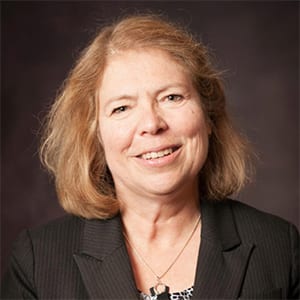News
Q&A with board member Susan Brown
 Susan Brown is the Goichman Family Director of the New York State Agricultural Experiment Station (NYSAES) at Cornell University, an Associate Dean of the College of Agriculture and Life Sciences and the Herman M. Cohn Professor of Agriculture and Life Sciences, as well as a member of the Boyce Thompson Institute (BTI) board. Brown was kind enough to answer a few questions about her service to BTI and her expertise on all things related to apples.
Susan Brown is the Goichman Family Director of the New York State Agricultural Experiment Station (NYSAES) at Cornell University, an Associate Dean of the College of Agriculture and Life Sciences and the Herman M. Cohn Professor of Agriculture and Life Sciences, as well as a member of the Boyce Thompson Institute (BTI) board. Brown was kind enough to answer a few questions about her service to BTI and her expertise on all things related to apples.
How did you first become involved with BTI?
I had known about BTI as a graduate student and when I came to Cornell in 1985 I interacted with BTI faculty in committees and via seminars. I hired a postdoc who had worked with David Stern, interacted with Jim Giovanonni, and Eric Richards was on my doctoral student’s committee. I found the faculty very engaging.
Why did you choose to join the board?
Cornell’s Geneva campus, where I am the director, has many similarities with BTI. I knew that my insight as a breeder/geneticist and my knowledge of our faculty research in plant pathology, entomology, horticulture and food science might help forge stronger connections between our two entities.
Do you feel like you get anything in return from your board service?
Absolutely! The board is a special group of individuals, who I am enjoying getting to know. How the board is used is of great interest, as I can contrast it with our advisory board interactions.
Where did you grow up?
East Haven, Conn. I have one brother and four sisters and we spent the summer at a beach that was only a mile walk away. My Dad bred and raced pigeons as a hobby and my Mom had a rock garden that brought people to our home from miles around.
Now, let’s talk about apples. Why apples?
I originally thought I’d specialize in flower or ornamental breeding, perhaps due to my Mom’s passion, yet when I interviewed for assistantships I realized that fruit trees are also ornamental (their blossoms, leaves and fruit), but they provide delicious and nutritious food. I was hooked.
How is the apple crop at Geneva this year?
We did not have the spring frost that Ithaca had, so our crop was great. However the drought was a challenge, with apples small despite using irrigation.
What kinds of traits are you breeding for – what does the farmer or the consumer want?
The first and foremost trait is quality and with consumers the most important trait is crispness. After that comes juiciness, flavor and sugar-acid balance. For growers, it is much more complicated, but the bottom line is that it needs to make them a profit, so a new apple cannot have serious flaws, such as pre-harvest drop, susceptibility to diseases, or irregular cropping.
How long does it take to develop a new variety?
One of my recent releases, SnapDragon®, was only 11 years from cross to commercialization, which may be a record for the shortest time. In the past, 40 years in development was common, where 20 years is more common now.
How are your RubyFrost® and Snapdragon® apples doing commercially?
Wonderfully! We have 900 acres between the two varieties in NY. The fruits are at roadside retail markets and in many supermarkets coast to coast. I get fan mail from consumers, so it has been very gratifying. The fact that only NY growers have had access has been appreciated by our industry.
Are any of the varieties that you’re working on genetically modified? In your estimation, what kind of reception have Arctic® apples, which were engineered by a company to avoid browning, had with farmers and consumers?
My apples are through traditional breeding, but I am supportive of transgenic technologies. The reception to the Arctic® apples has been mixed. The industry has not been supportive, because they feel we already have good non-browning apples and the potential consumer backlash and concerns about pollen contamination were unknown. If the trait incorporated was for disease resistance, such as is being sought for citrus greening, the response would have been more favorable.
Last I checked, you had developed 10 cherry varieties and four apples. Is that still the correct count?
Yes, but we are writing patents for new apples, including one suited to hard cider. My 25-year old son is pleased with that invention!

